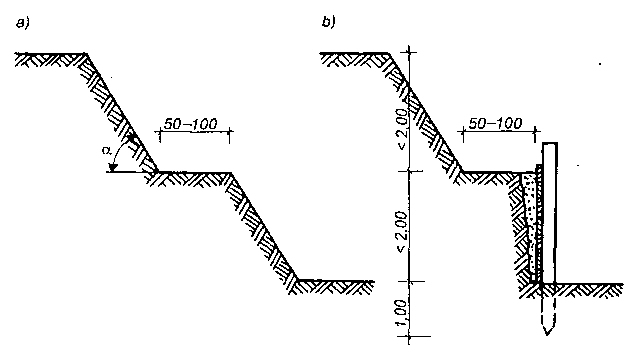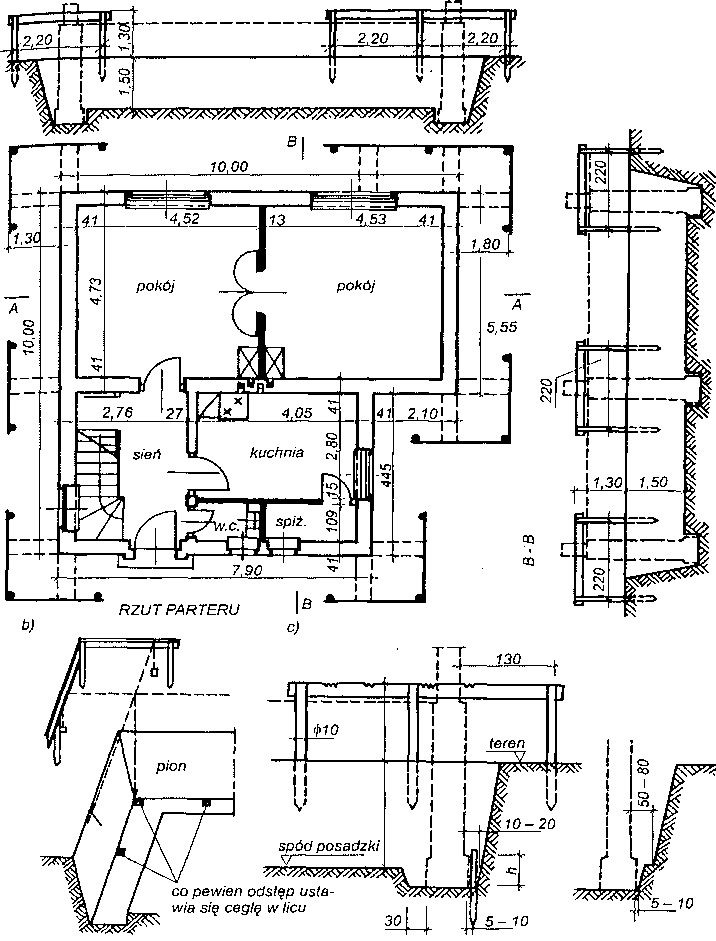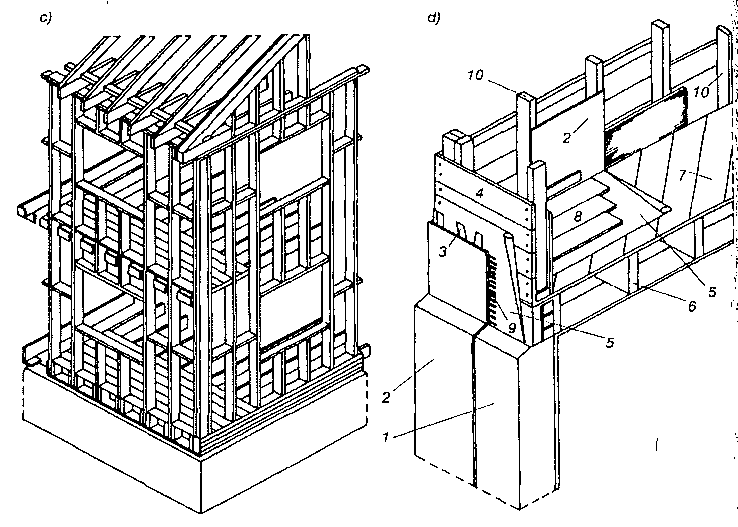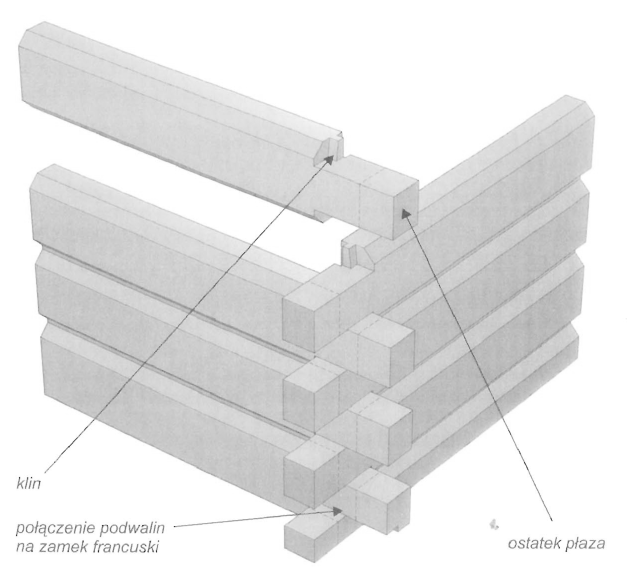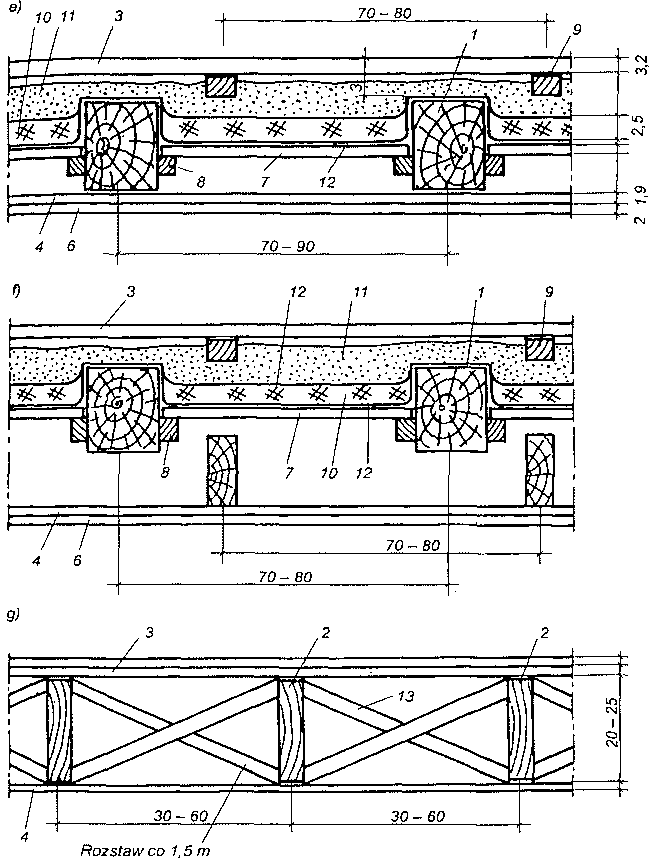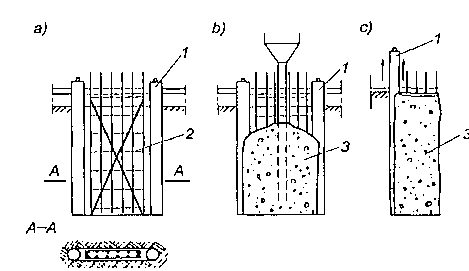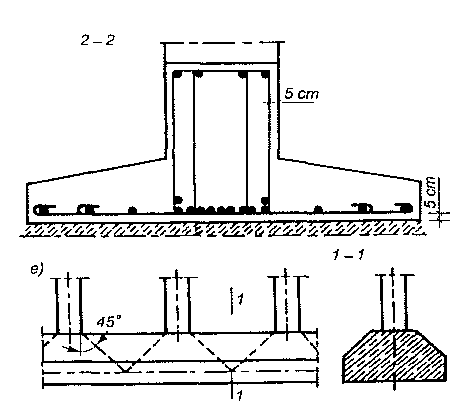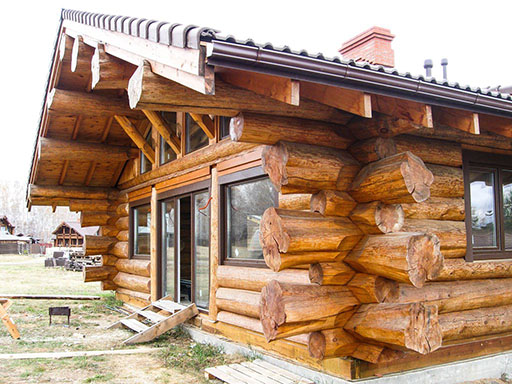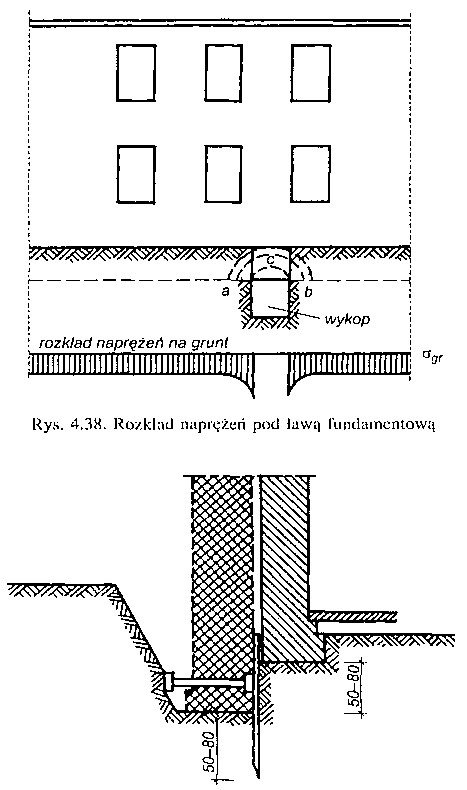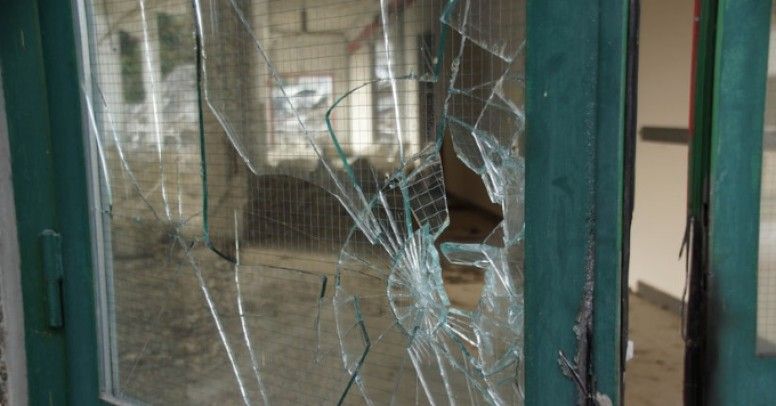Wykopy wąskoprzestrzenne.
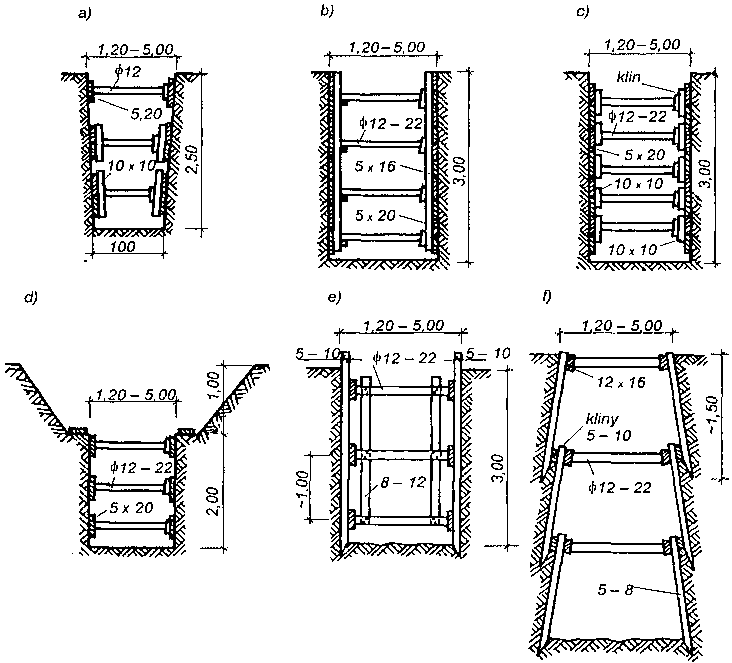 Sposoby rozparcia wykopów Wąskoprzestrzennych: a) w gruncie zwięzłym, b), c) w gruncie mało spoistym i luźnym, d) sposób złożony, e) w gruncie luźnym przy zastosowaniu bali pionowych, f) w gruncie luźnym sposób górniczy.
Sposoby rozparcia wykopów Wąskoprzestrzennych: a) w gruncie zwięzłym, b), c) w gruncie mało spoistym i luźnym, d) sposób złożony, e) w gruncie luźnym przy zastosowaniu bali pionowych, f) w gruncie luźnym sposób górniczy.
Wykopy wąskoprzestrzenne, które są stosowane do głębszych robót fundamentowych lub kanalizacyjnych, można zabezpieczyć stosując rozparcia przedstawione na rysunku. Przy gruntach zwartych — łatwo utrzymujących się — rozparcie wykopu polega na wyłożeniu ścian wykopu deskami pojedynczymi lub kilkoma razem (w grupach), w dość znacznych odstępach, mniejszych u dołu wykopu a większych u góry.
Pomiędzy deskowania ścian wykopu zakłada się rozpory z drewnianych okrąglaków mocno rozparte klinami. Rozpory zakłada się zwykle poziomo, mogą być również ułożone z małym nachyleniem.
Ściany wykopu robi się z lekkim nachyleniem do poziomu (rys.a), co daje większą pewność, że rozparcie nie rozluźni się. Takie wykopy mają jednak tę wadę, że rozpory na dole są krótsze niż u góry.
Do rozparcia więcej niż jednej deski poziomej należy między deskowaniem a rozporami umieszczać deski pionowe. Deski grupowo rozmieszczone można połączyć za pomocą poprzeczek.
Rozparcie przy gruntach mało spoistych, łatwo obsuwających się, wykonuje się z desek układanych na styk lub z małymi odstępami — szparami. Pionowe deski nakładkowe stosuje się w krótkich odcinkach na końcach rozpór. W trakcie wykonywania robót odcinki te są wymieniane na dłuższe. Po ukończeniu wykopu deski te wymienia się zwykle na deski długie, które wymagają mniej podpór.
Jeśli jest więcej miejsca w terenie, można rozparcie wykonać wg rys.d; dołem ściany rozparte, a górą odsadzka z kładką roboczą i skarpą bez zabezpieczenia.
